

The Namib Desert's hairy-footed ecological engineers
9th December 2020
Almost everywhere you walk on the gravel plains of the central Namib, you will find clusters of burrows. These patches of mouse-sized holes in the ground are often associated with stands of denser vegetation. These burrows are almost always the work of the hairy-footed gerbil (Gerbilliscus setzeri), a species that is widespread in the Namib Desert but does not occur elsewhere. Although this Namib resident weighs only 30-40g with a total body length of 27cm (over half of which is tail), it packs a big ecological punch!
Do Gerbils Matter?
Many other gerbil species are known to change soil characteristics and conditions through their burrowing activities in a range of other ecosystems. This is called ecological engineering
, whereby their activities change conditions for other species by improving soil structure, aeration, soil surface permeability, water infiltration rate and, perhaps most importantly, soil fertility and plant productivity. These little rodents thus have an outsized impact on the ecosystems they inhabit.
Most previous studies on gerbils as ecological engineers were done in much wetter environments than the Namib Desert. However, studies of large-scale ecological engineering in deserts are rare, possibly because researchers don't expect improved aeration and infiltration to improve plant life in such a dry environment. Yet Namib gerbil burrows are frequently associated with patches of denser vegetation (mostly grasses), and a 1987 study of these patches suggested that hairy-footed gerbils could indeed be ecological engineers. My study built on these early results by looking at the possible impact of gerbils at a much larger scale – to be true ecological engineers, their impact must go beyond just a few patches.
If these central Namib gerbils are indeed ecological engineers, then they would be critical for the health of this extremely dry ecosystem. The effect of gerbils on the soil and subsequent plant growth could go a long way towards explaining the almost continuous presence of large grazers such as zebra and gemsbok in extremely dry areas where they could not normally survive due to lack of vegetation.
Gerbils might not be the only reason, or even the main reason, for denser vegetation patches, however. Scientists have described a number of natural mechanisms in deserts that could create these patterns, the most common of which is overland water-flow patterns influenced by topography. So do gerbils really matter?
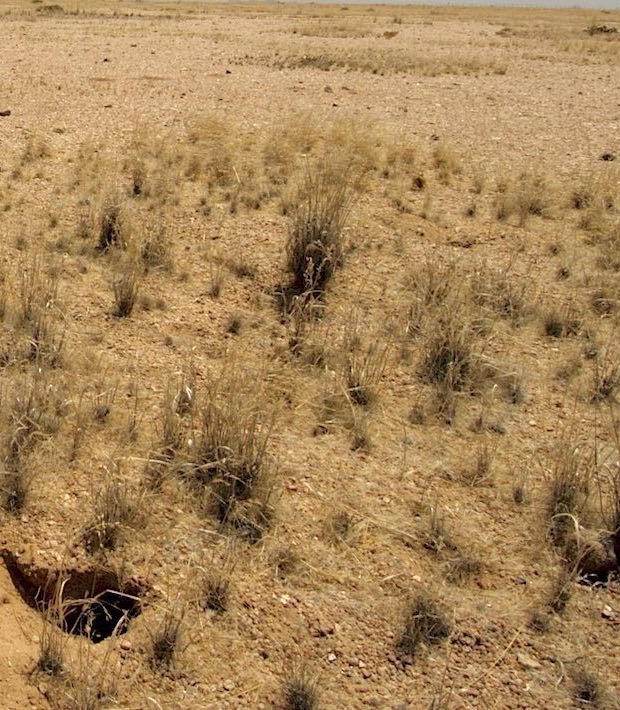
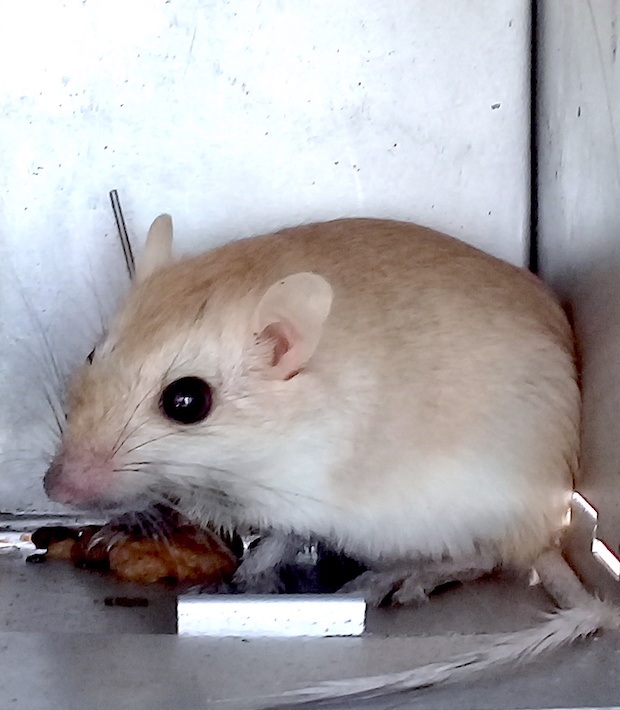
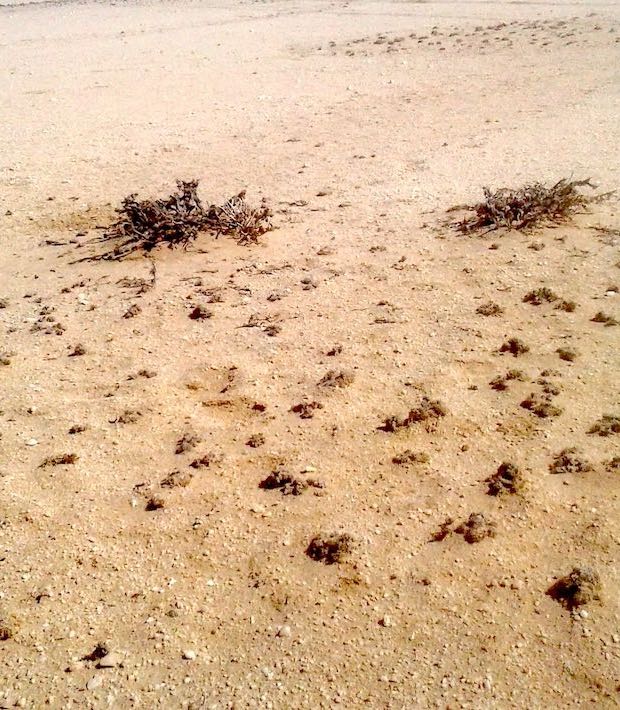
Studying gerbils in the Namib Desert
What is the real value of hairy-footed gerbils to the Namib Desert? This was the key question I set out to answer in my study, which was funded by Swakop Uranium and conducted under the auspices of the Namib Ecological Restoration and Monitoring Unit at Gobabeb. To understand their value, I first had to determine whether gerbils create the vegetation patches, or improve or maintain pre-existing patches. I first investigated their effect on individual patches and then expanded the study to consider their impact on the broader ecosystem. Finally, I wanted to know whether gerbil presence is affected by the pattern of soil types or other aspects of the soil environment. Knowing this would help ensure that human impacts (like mining) would not negatively impact the gerbils and, in turn, biodiversity in the Namib Desert.
My questions were answered through intensive fieldwork in the central Namib gravel plains (60 km from Swakopmund, near the Husab Uranium mine) from February 2019 to February 2020. This area receives only 0-50 mm of rain per year and is thus representative of much of the central Namib. I first mapped three types of vegetation patches: 1) those that contained actively used burrows, 2) those that had inactive burrows and 3) those with no burrows. Burrows are abandoned when the gerbils die or relocate to another area.
I reasoned that if the vegetation on the patches was the result of gerbils' activities, the differences between patch characteristics and the surrounding environment would be due to the patch type (i.e. if burrows were active, inactive, or absent). I measured ten patches of each type and compared each to a control patch
about 30 m away – an area without vegetation that was about the same size as the vegetation patch. I further differentiated between areas with a relatively higher density of vegetation patches and areas with lower density, which may be caused by unknown environmental factors. At each patch and its respective control patch, I measured numerous different biophysical, chemical and vegetation variables. All of this information, once statistically analysed, would tell me whether the presence of gerbil burrows (and their density) made any difference to soil and vegetation characteristics.
This study was not for the lazy man! I spent five months camping in an open area, covering 30-60 km per day on a fat-wheeled bicycle packed with equipment and 10 litres of water, crossing hills and mountains to get to my sample sites. Most of the days in the Namib Desert start off foggy, which burns off to reveal a clear sky and bright sunshine in the afternoon, although it was always cold at night. Though alone, I was too busy working like a soldier to notice loneliness.
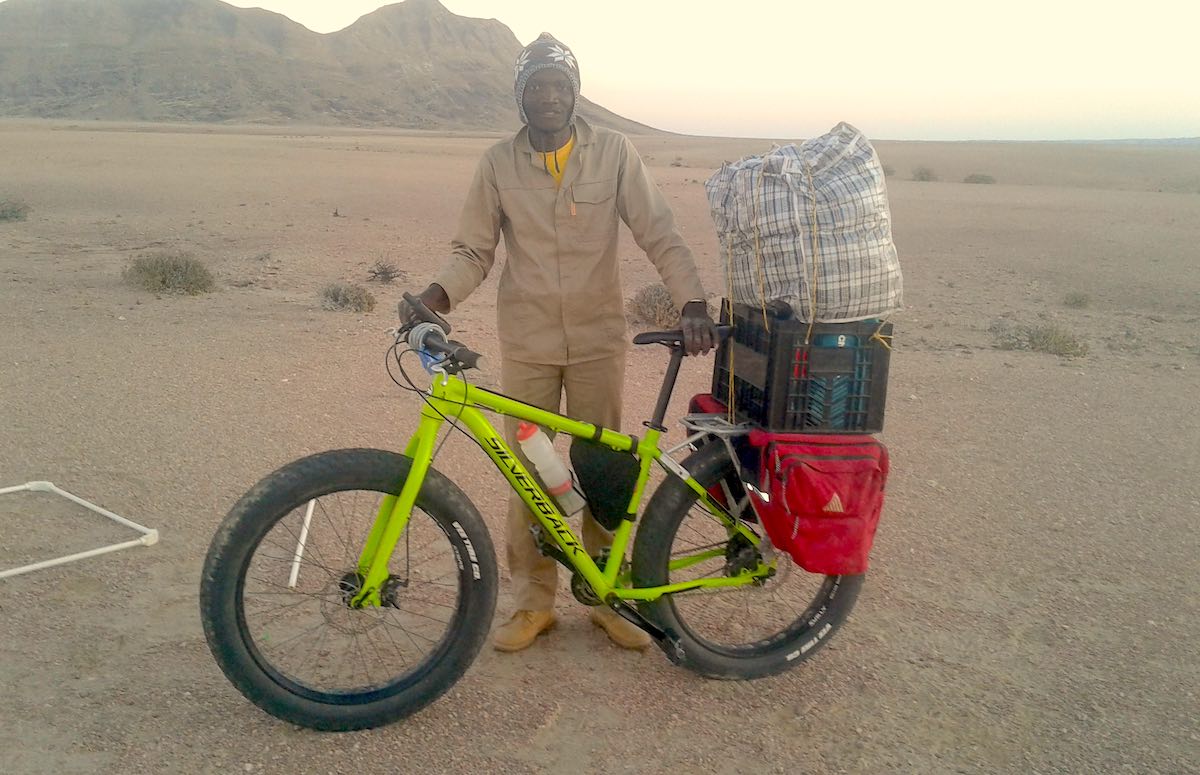

Gerbils make a difference
I found that the variables reflecting plant productivity, soil fertility and soil moisture were much higher on patches with burrows than patches without burrows. Surprisingly, inactive burrow patches had, on average, more than three times more plant biomass than patches without burrows and almost as many times more than patches with active burrows. This suggests that the gerbils have a big effect at the scale of an average vegetation patch, and that their burrowing activities especially improve the soil once they have abandoned the burrows. This is probably because the burrows improve soil fertility and soil texture by increasing water infiltration rate and the soil's water holding capacity, thus improving soil moisture content.

But the question remained: are the gerbils' effects noticeable at a wider spatial scale and is their distribution affected by local substrate and other characteristics? To find out, I measured and mapped the spatial extent and distribution of vegetation patches of all three patch types (active burrows, inactive burrows and no burrows) across various habitats and substrates on the Husab gravel plains. Here I reasoned that if the burrows, particularly the inactive burrows, were widespread on the gravel plains, then the patch-scale effect that I showed in the first part of my study would translate to a proper landscape level, at which point we could confidently call hairy-footed gerbils ecological engineers.
I found that the spatial distribution of the density of vegetation patches and the number of burrows per patch differed according to habitat type and soil substrate characteristics. However, vegetation patches of all types were common and widespread. In total, 300 of the 469 sampling points I visited had vegetation patches in the search area around it. Three-quarters (74%) of the patches around these 300 sampling points had inactive burrow colonies, 62% of them had patches without burrows, while only 11% had patches with active burrows. Considering the widespread geographic distribution of inactive gerbil burrows throughout the Namib gravel plains together with my findings at the patch scale, I concluded that gerbils are indeed ecological engineers in the Namib Desert ecosystem.
Because gerbil burrows affect soil moisture and plant productivity, their habitat and substrate preferences are likely to affect the distribution of herbivores like zebra and gemsbok. Overlaying my maps of gerbil burrow patches with the spatial distribution of these large herbivores in the Husab gravel plains is thus an interesting avenue for further research. Future studies should also monitor the change in gerbil burrowing activities over time and space, especially if such changes are due to human disturbance in and around mining areas. The ecological effects of this little hairy-footed rodent are simply too great to ignore.
For articles on similar topics, please click one of the following options:
If you enjoyed this page, then you might also like:

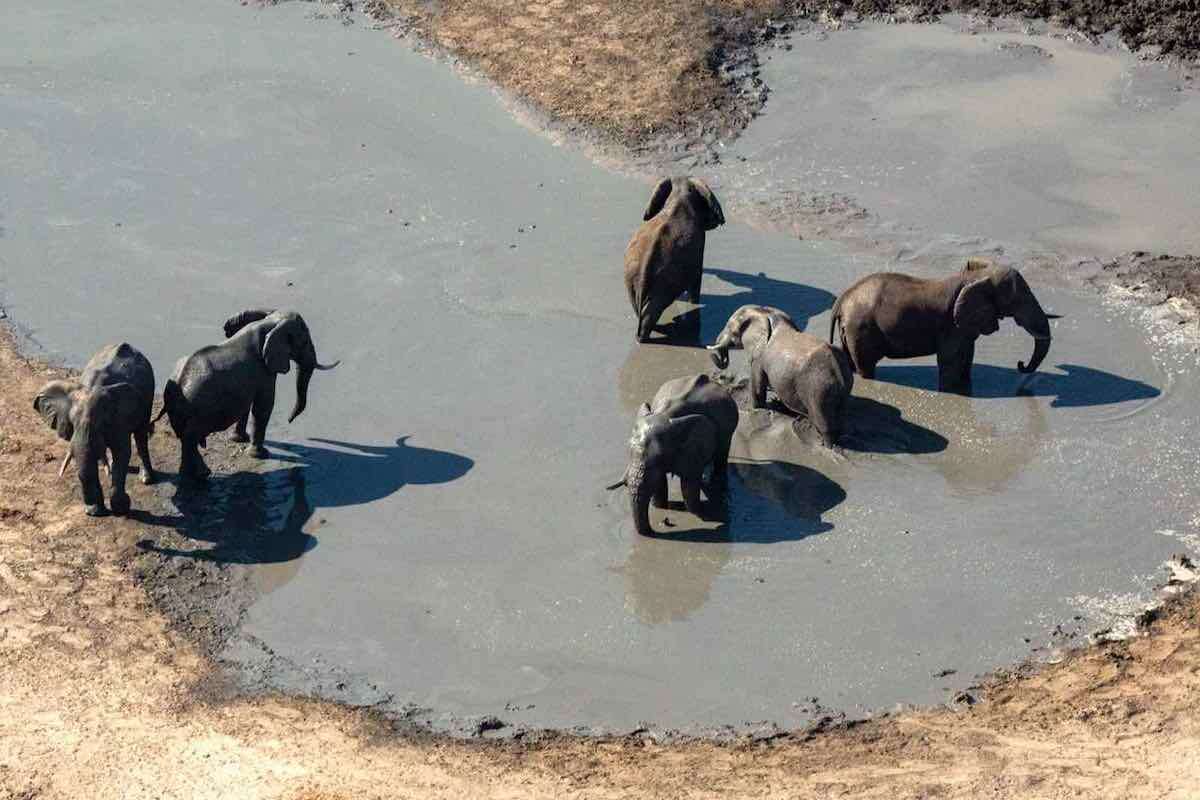
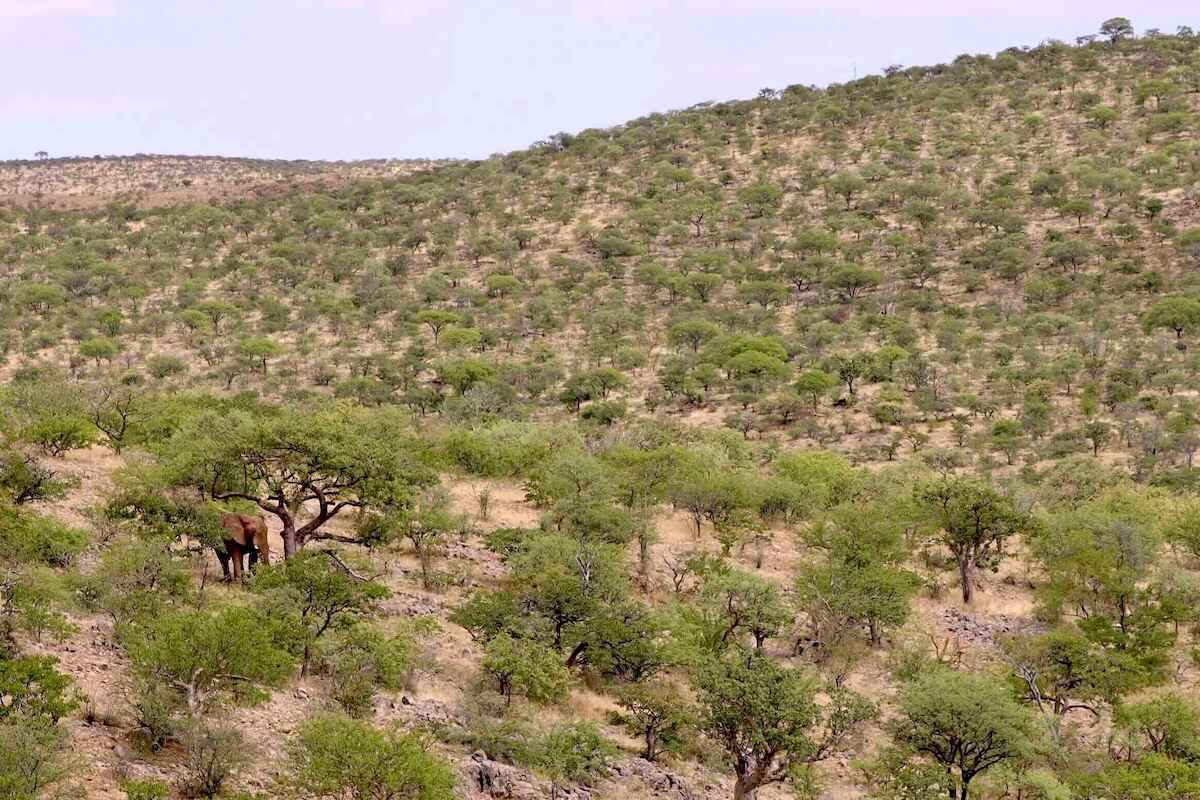



NUST Faculty of Natural Resource and Spatial Sciences.
This NUST Faculty boasts a diverse portfolio of disciplines from land and property sciences to natural and agricultural science. This postgraduate study falls under the Department of Agriculture and Natural Resources Sciences (DANRS), which strives to be a leader in Namibia in the field of sustainable agriculture, biodiversity and conservation sciences with a special focus on arid ecosystems.
Gobabeb - Namib Research Institute, previously known as the Gobabeb Research and Training Centre, has been conducting research in all aspects of the desert environment for more than 50 years. The Namib Ecological Restoration and Monitoring Unit (NERMU) is a specialist unit within Gobabeb established in 2011 that does training, research and monitoring in the applied fields of ecological restoration and mining impact management.
https://gobabeb.org
NUST Faculty of Natural Resource and Spatial Sciences.
This NUST Faculty boasts a diverse portfolio of disciplines from land and property sciences to natural and agricultural science. This postgraduate study falls under the Department of Agriculture and Natural Resources Sciences (DANRS), which strives to be a leader in Namibia in the field of sustainable agriculture, biodiversity and conservation sciences with a special focus on arid ecosystems.
Gobabeb - Namib Research Institute, previously known as the Gobabeb Research and Training Centre, has been conducting research in all aspects of the desert environment for more than 50 years. The Namib Ecological Restoration and Monitoring Unit (NERMU) is a specialist unit within Gobabeb established in 2011 that does training, research and monitoring in the applied fields of ecological restoration and mining impact management.
https://gobabeb.org
Halle Shaanika achieved his Master of Science degree in Natural Resources Management at Namibia University of Science and Technology (NUST) under the supervision of Prof. Theo Wassenaar (NUST) and Dr. Seth Eiseb (University of Namibia), graduating in November 2020. His Masters studies were funded by Swakop Uranium and the Namibian Chamber of Environment. Halle was trained as an Environmental Biologist and Geologist at the University of Namibia (UNAM) and in the field of Natural Resources Management at NUST. He is interested in the conservation of biodiversity (ecological and socio-economic aspects), environmental management, and risk assessment. Halle has a passion for science, and plans to register for his PhD in Natural Resources Sciences at NUST in 2021.
Halle Shaanika achieved his Master of Science degree in Natural Resources Management at Namibia University of Science and Technology (NUST) under the supervision of Prof. Theo Wassenaar (NUST) and Dr. Seth Eiseb (University of Namibia), graduating in November 2020. His Masters studies were funded by Swakop Uranium and the Namibian Chamber of Environment. Halle was trained as an Environmental Biologist and Geologist at the University of Namibia (UNAM) and in the field of Natural Resources Management at NUST. He is interested in the conservation of biodiversity (ecological and socio-economic aspects), environmental management, and risk assessment. Halle has a passion for science, and plans to register for his PhD in Natural Resources Sciences at NUST in 2021.
We use cookies to monitor site usage and to help improve it. See our Privacy Policy for details. By continuing to use the site, you acknowledge acceptance of our policy.